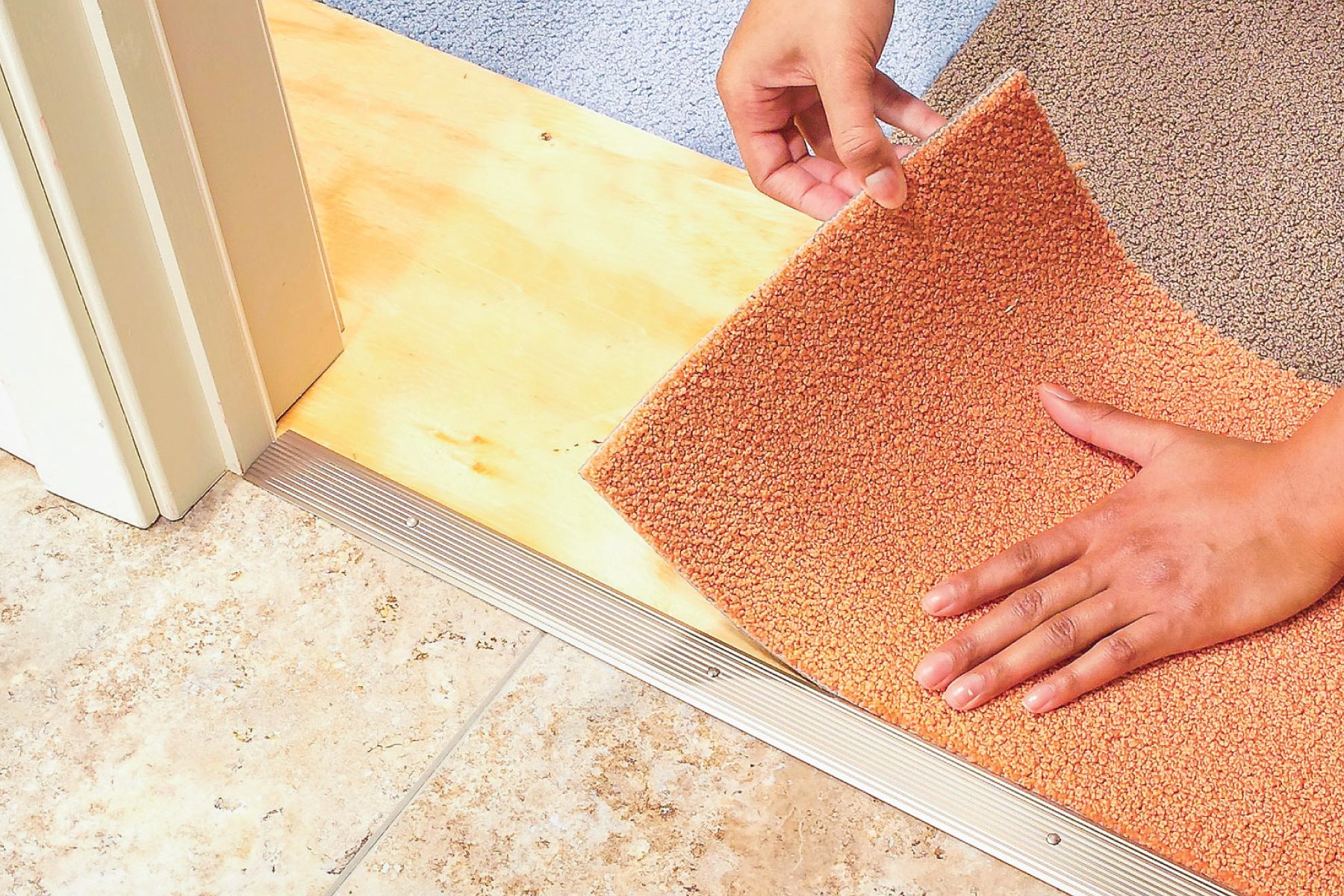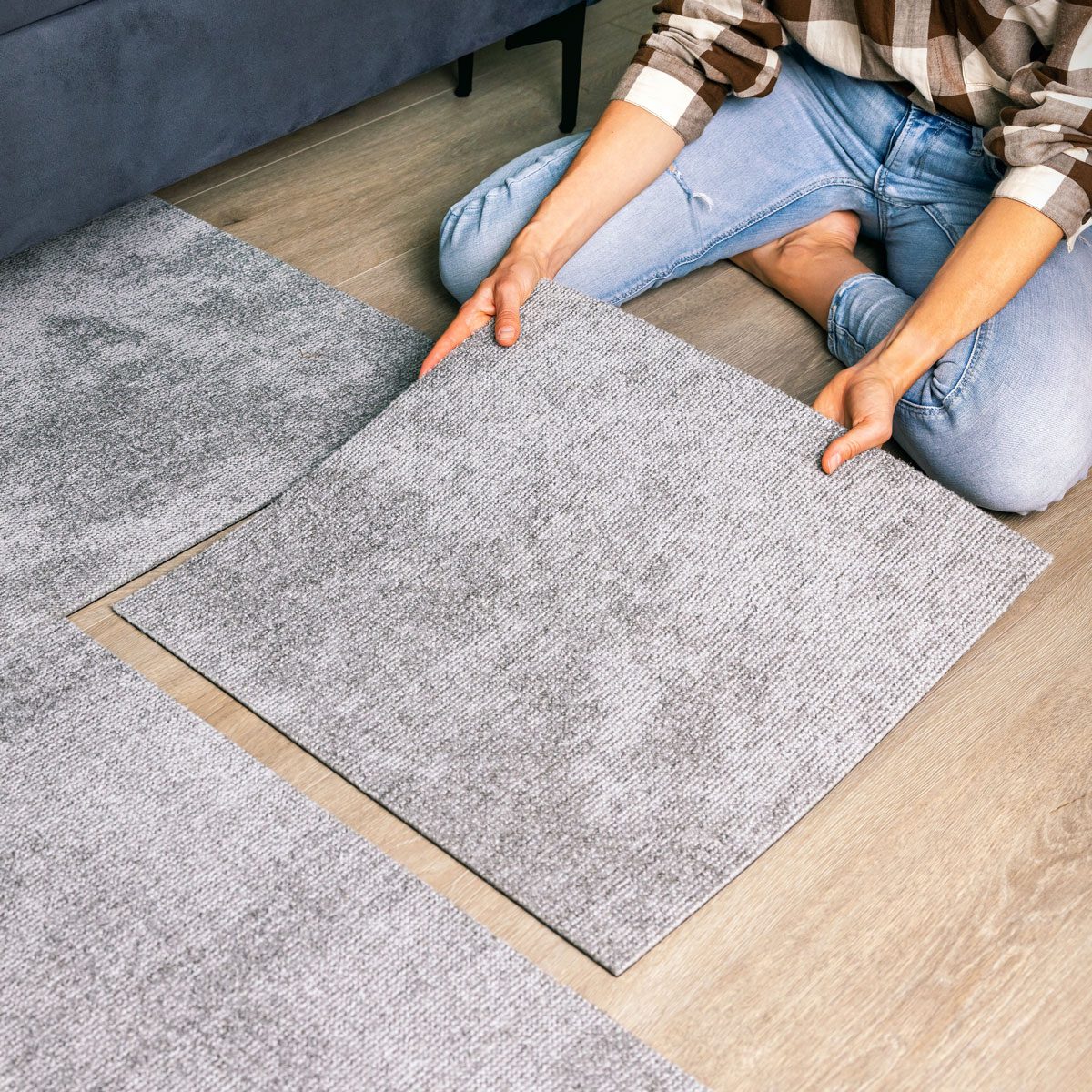Lay a high-quality carpet floor in less than a day.
A full day
Beginner
Varies
Introduction
Modular carpet, also known as carpet squares, is a DIY-friendly alternative to traditional wall-to-wall carpet. Even inexperienced homeowners can carpet a room in a day.
If you think installing carpet is time-consuming and complicated, think again. Modular carpet, sometimes called carpet squares or peel-and-stick carpet square tiles, is one of the easiest floor coverings to install. You simply lay the squares on the floor; adhesive strips and the carpet’s heavy backing hold them in place. You can finish most rooms in a day, if not in an afternoon. And you can use it anywhere. You can add whimsy to a kids’ playroom or create an elegant look in a formal dining room.
If you don’t need wall-to-wall carpet, these squares make great area rugs. Cleaning, replacing or swapping squares is easy too. They just pull right up—even after they’re adhered. You can clean off stained squares in the sink or replace them. Is that kid-friendly, or what?
Modular carpet is slightly more expensive than most conventional carpets, but a carpet pad isn’t required and you can save on costs elsewhere by installing it yourself.
In this article, we’ll show you how to install the carpet and cut it to fit around obstacles such as doorjambs. Installation is nearly foolproof— you can easily pull up misaligned squares and reposition them. And you won’t need any specialty tools. A tape measure and chalk line to snap your baselines, and a carpenter’s square and utility knife to cut the squares will get the job done.
Assess Your Existing Floor
You can lay carpet squares directly over concrete, plywood and OSB or particleboard subfloors, as well as over vinyl, tile, laminate and some hardwood finished floors. One caution: The backing may eventually discolor some wood floors. If you later decide to remove the carpet, you’ll have to refinish the wood.
Conduct a moisture test (kits available at home centers) before carpeting a concrete floor. If the moisture content is too high, you can always seal the concrete, then install the carpet. Let the new concrete cure for at least 90 days first.
Any wood subfloor or existing floor has to be solid, dry and securely fastened. Screw down any loose areas of floor and replace any water-damaged sections. This is also an ideal time to find and fix any floor squeaks.
Arrange your layout to avoid leaving narrow strips along the walls. They call attention to any wall not perfectly square. If possible, allow at least 4-in.-wide sections of carpet along each wall. Your final drawing will tell you how many squares of each color you’ll need.
Determine the room’s square footage by multiplying the length by the width (round up measurements to the nearest foot). For irregular-shaped rooms, divide the floor into individual sections, calculate the square footage of each, then add them together. Order the carpet, adding an extra 10 percent for waste.
Carpet Knife
A utility knife works okay for cutting the squares, but we prefer a carpet knife because it’s a bit more accurate. Use a sharp blade and make several shallow passes. The backing allows for a crisp cut that won’t unravel. Cut the squares on a smooth surface, like a hardboard. Avoid cutting on a plywood subfloor since the wood grain can pull the blade off line.
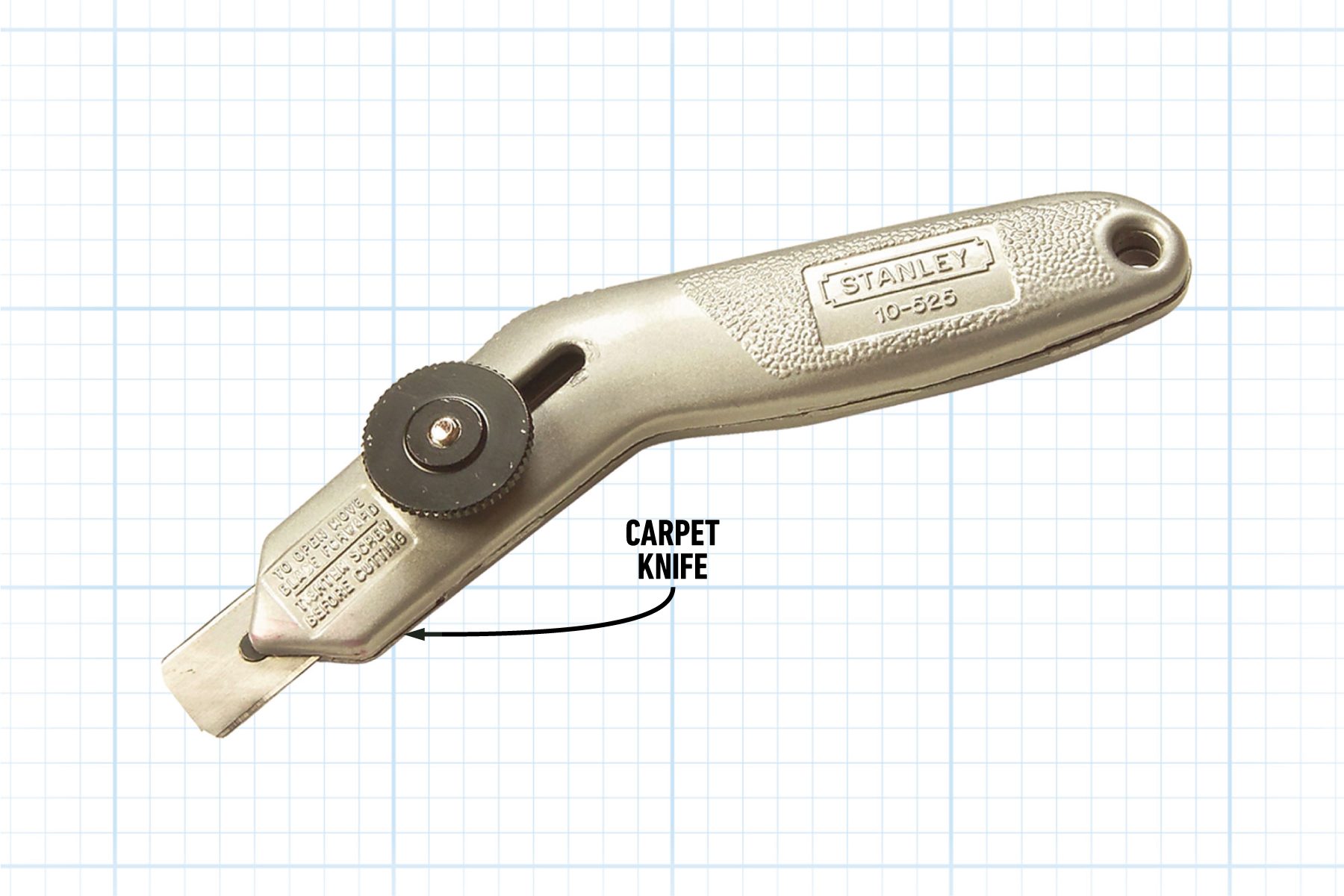
Tools Required
- Chalk line
- Framing square
- Tape measure
Materials Required
- Carpet squares
- Graph paper
- Stiff paper for templates
Project step-by-step (11)
Draw a layout
With practically unlimited carpet options, the hardest part may be choosing a design with peel-and-stick carpet squares. You’ll have to select the brand you want before you start since the brands have different square sizes. Then, sketch the room to scale on graph paper to experiment with different designs. Mark your baseline rows on the sketch for peel-and-stick carpet squares, and use colored pencils or markers to draw in the squares.
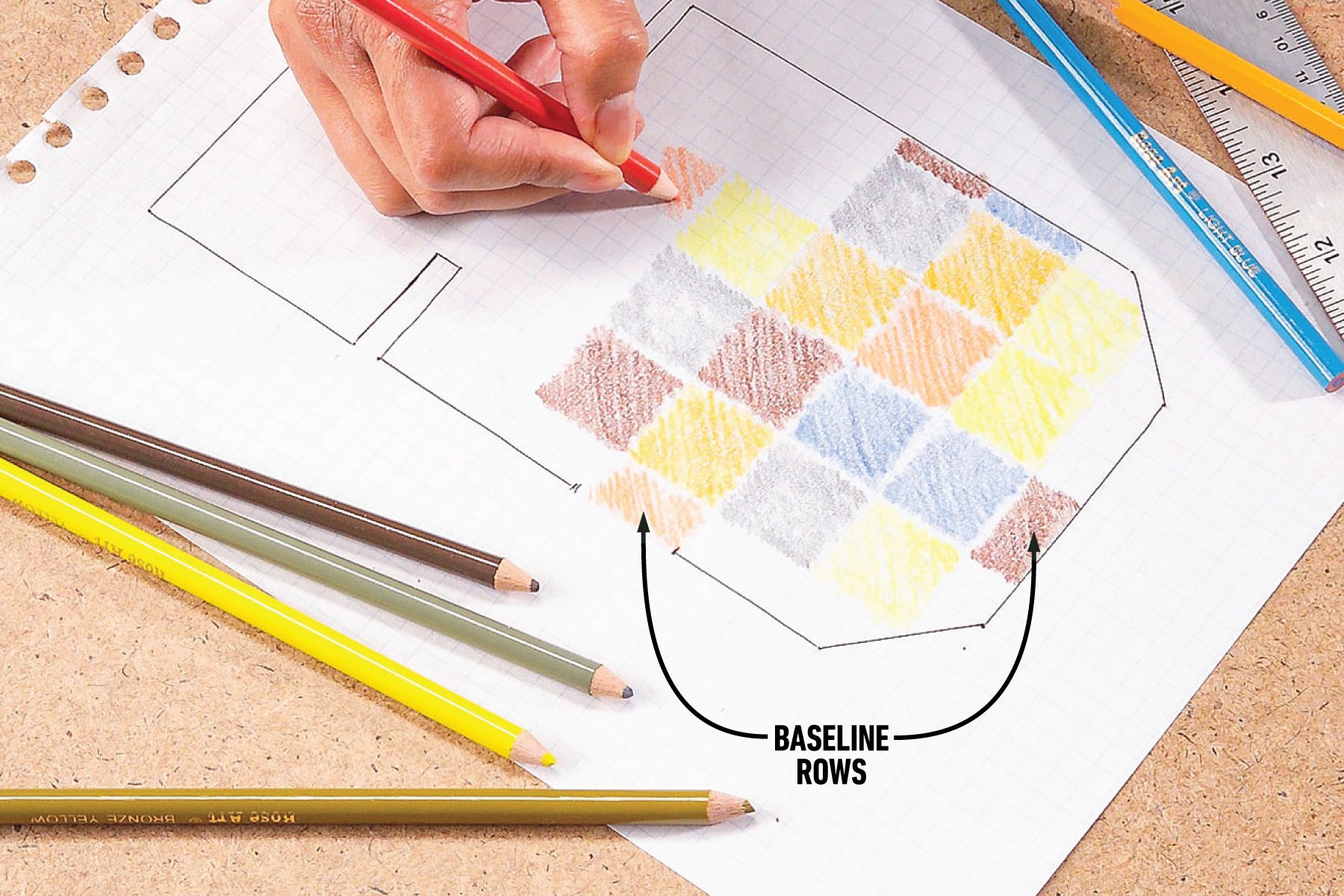
Layout lines
Prepare the floor by sweeping or vacuuming up all dust and grit. Then, using your sketch as a guide, pick the spot for the base rows. Keep them as close to the center of the room as possible, since they guide the rest of the installation.
Measure and snap your perpendicular baselines for those rows. Lay carpet squares- without adhesive- along both baselines to test the layout. If you end up with gaps less than 4 inches next to walls, shift the layout and snap new baselines.
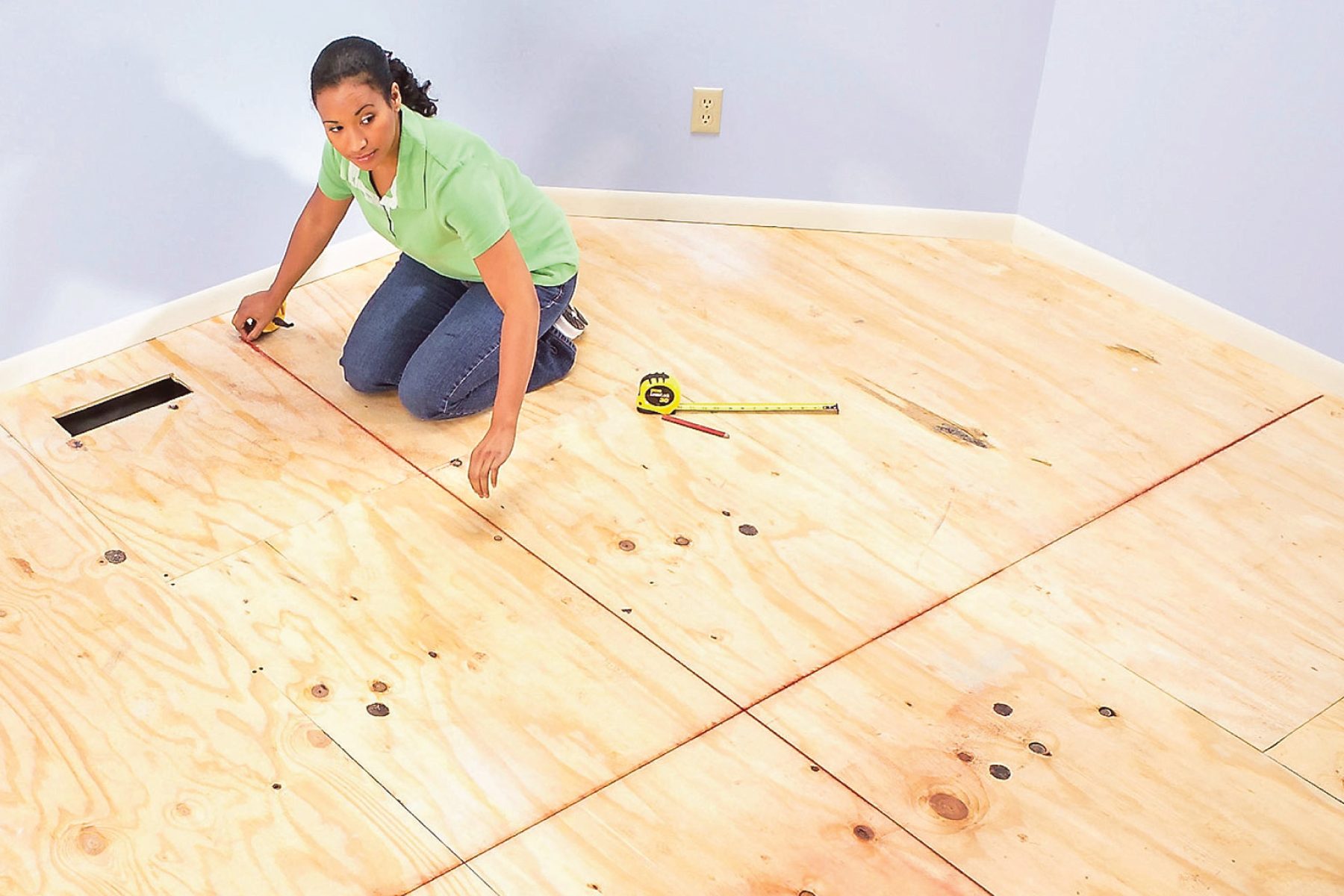
Starting rows
To install the squares, start where the baselines intersect and work outward. Remove the protective film, butt the squares tightly and adhere them to the floor.
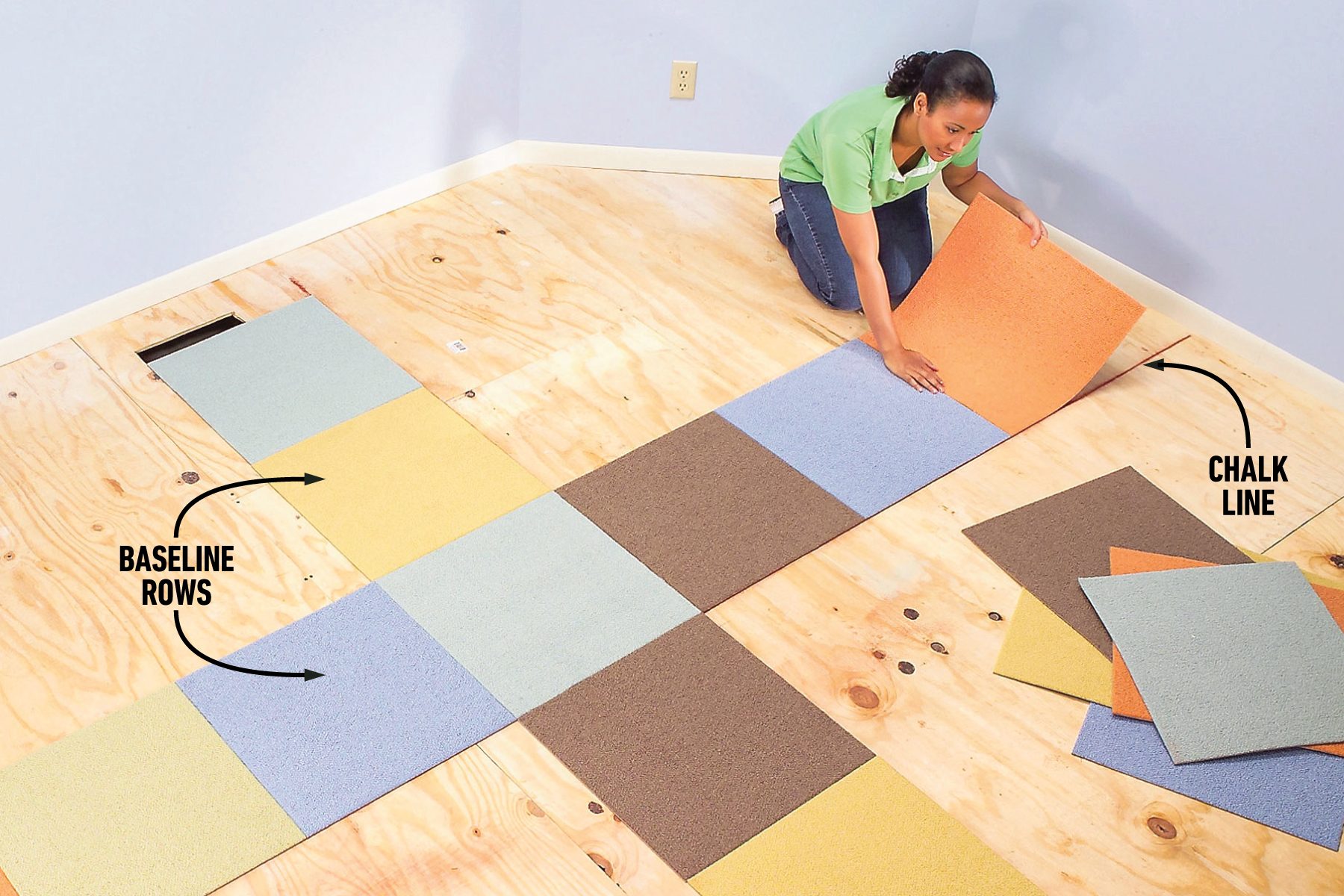
Cut tight to walls
Peel the film off the adhesive strips and butt each square tightly against the preceding one. Be sure to keep the directional arrows on the back of the squares pointing in the same direction.
Don’t adhere to the last full square until you cut the final square to size. After you cut the square, add two adhesive strips so there’s one in all four corners. Extra strips come in the box. Then, adhere the final pieces.
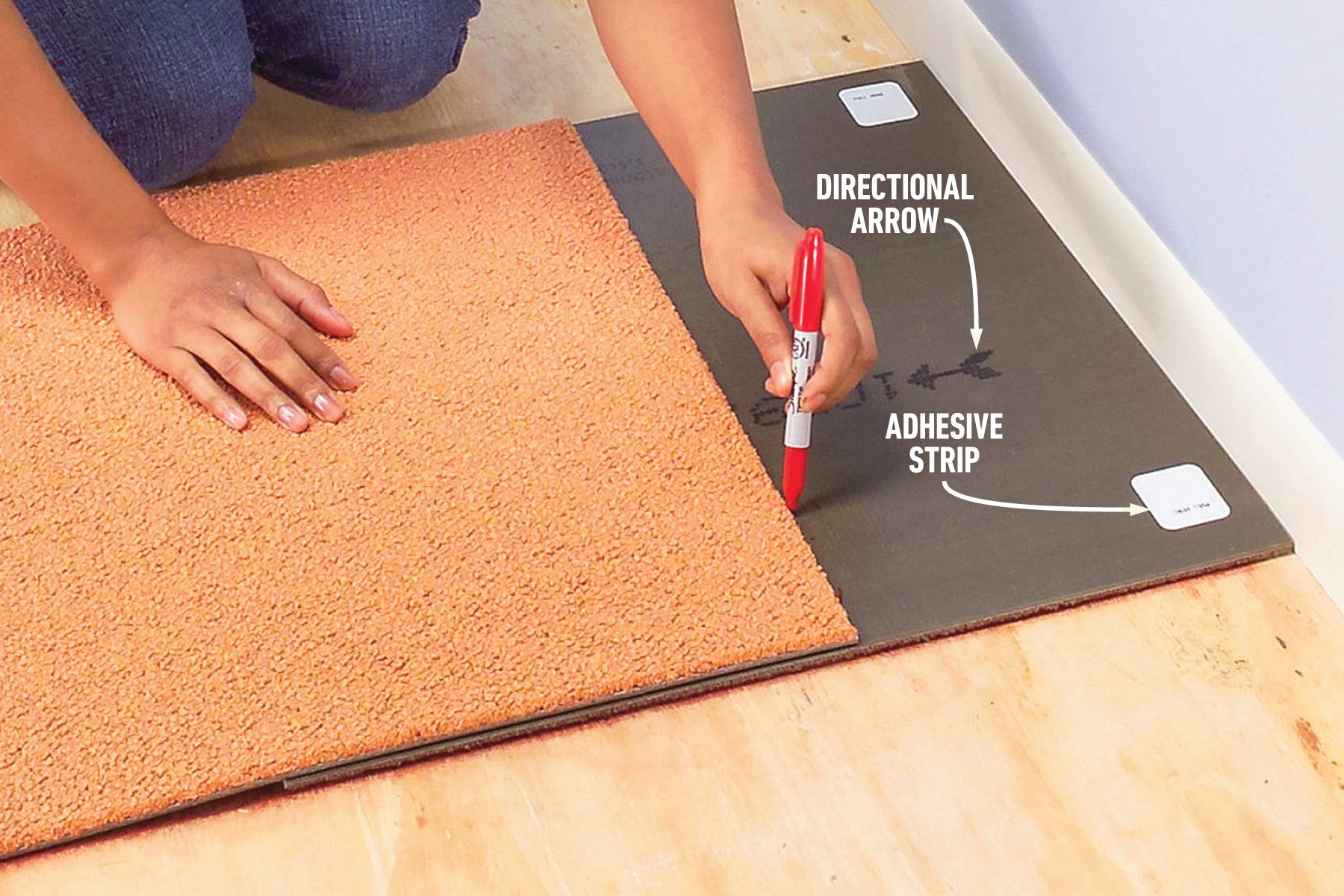
Fill in
With the base rows in place, start back at the center and fill in the quadrants using a “step” pattern. Simply press each square snugly against adjacent squares, keeping carpet strands out of the joints. You only have to adhere the baseline rows and the squares on both sides of the baselines and along the room’s perimeter. The others stay put, thanks to their heavy backing.
You can easily change out squares for a more pleasing design, even if they’re adhered. If the adhesive residue remains, remove it with rubbing alcohol.
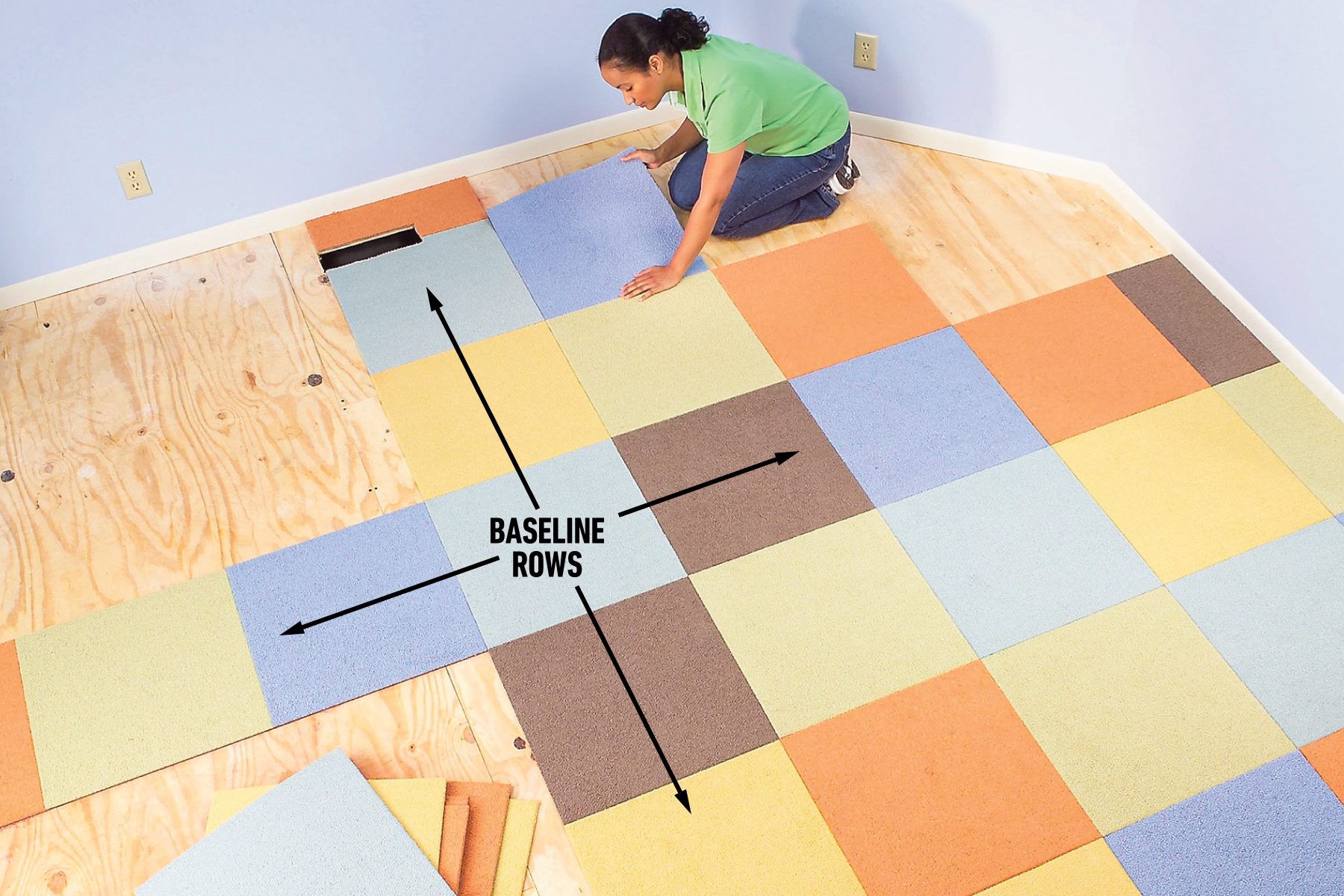
Mark cuts in place
Cutting carpet to fit around outside corners, archway walls and doorjambs is the most challenging part of the job. Start by setting a square against the face of the archway wall, overlapping and aligned with the previously installed square. Mark the carpet on each side of the wall, then place the same square against the side of the wall and mark it.
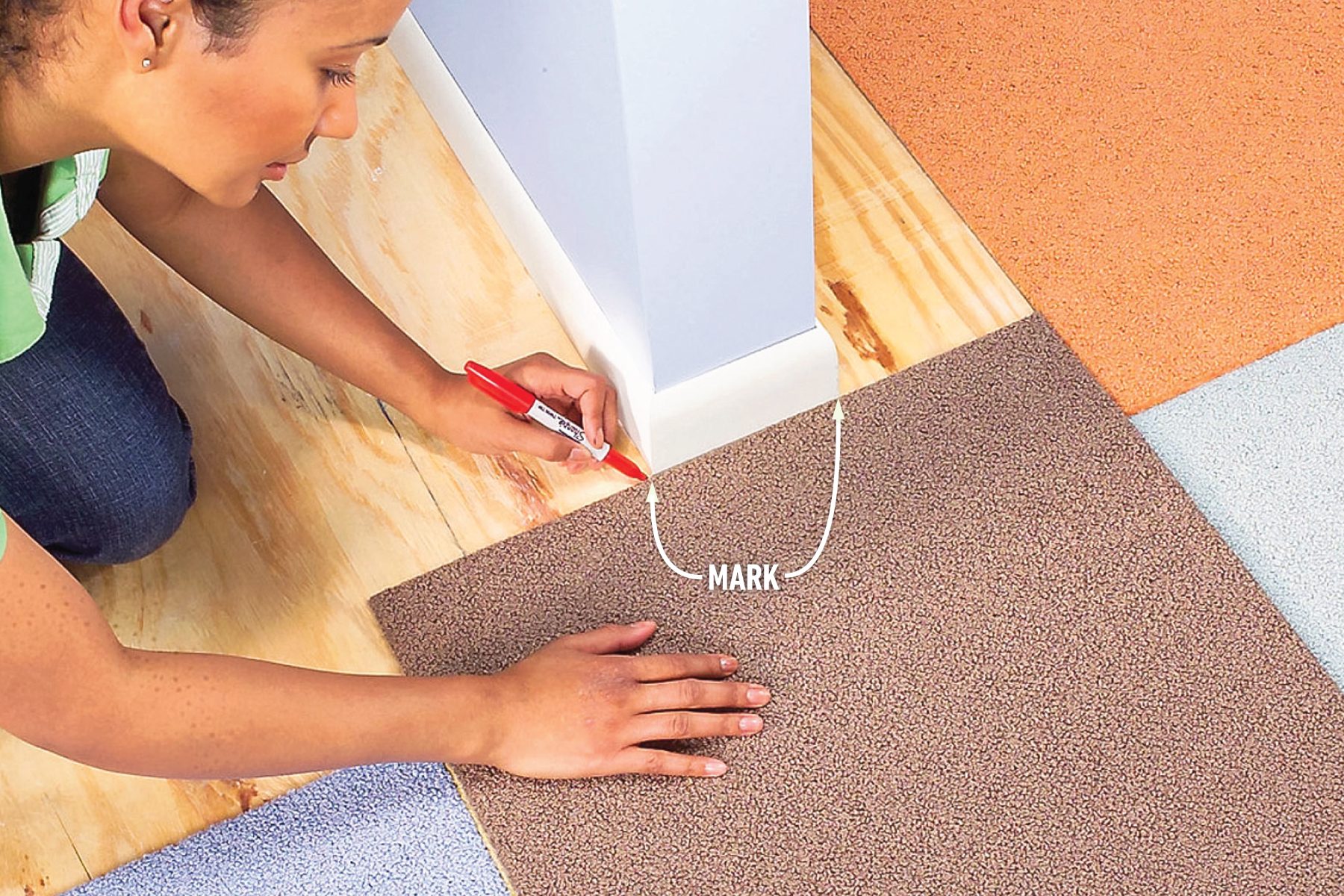
Close up
Mark both sides of the cut.
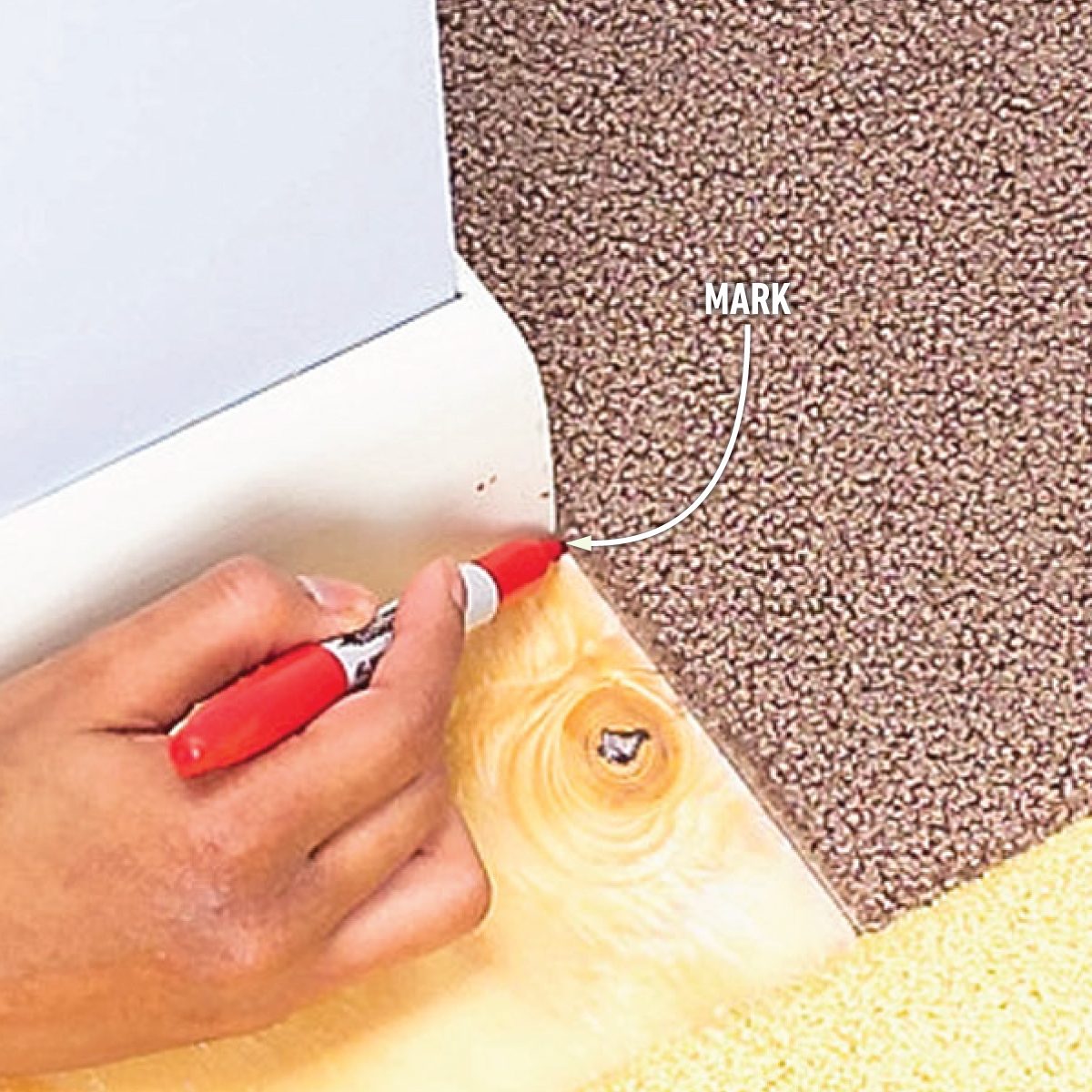
Cut on the back
Using the marks, outline your cut with your carpenter’s square as a guide. It’s best to slightly undercut the mark, then fine-tune as needed for a tight fit. This same method works for marking and notching squares to fit around corners.
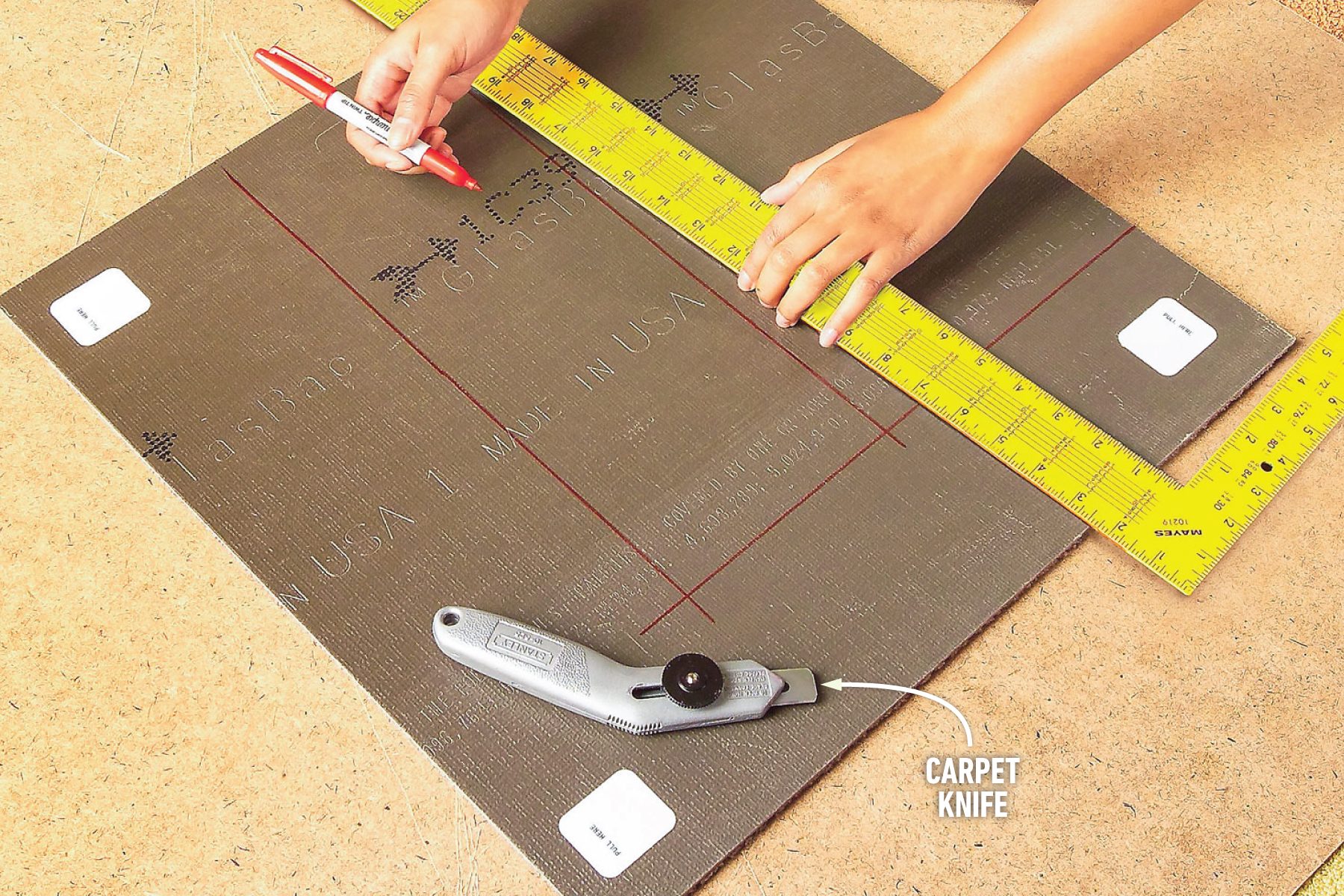
Close up of carpet tile adhesive
Cut against the edge of the square for a straight cut.

Slide into place
Install the carpet square against the archway wall. If necessary, fine-tune the cut so the square fits snugly.
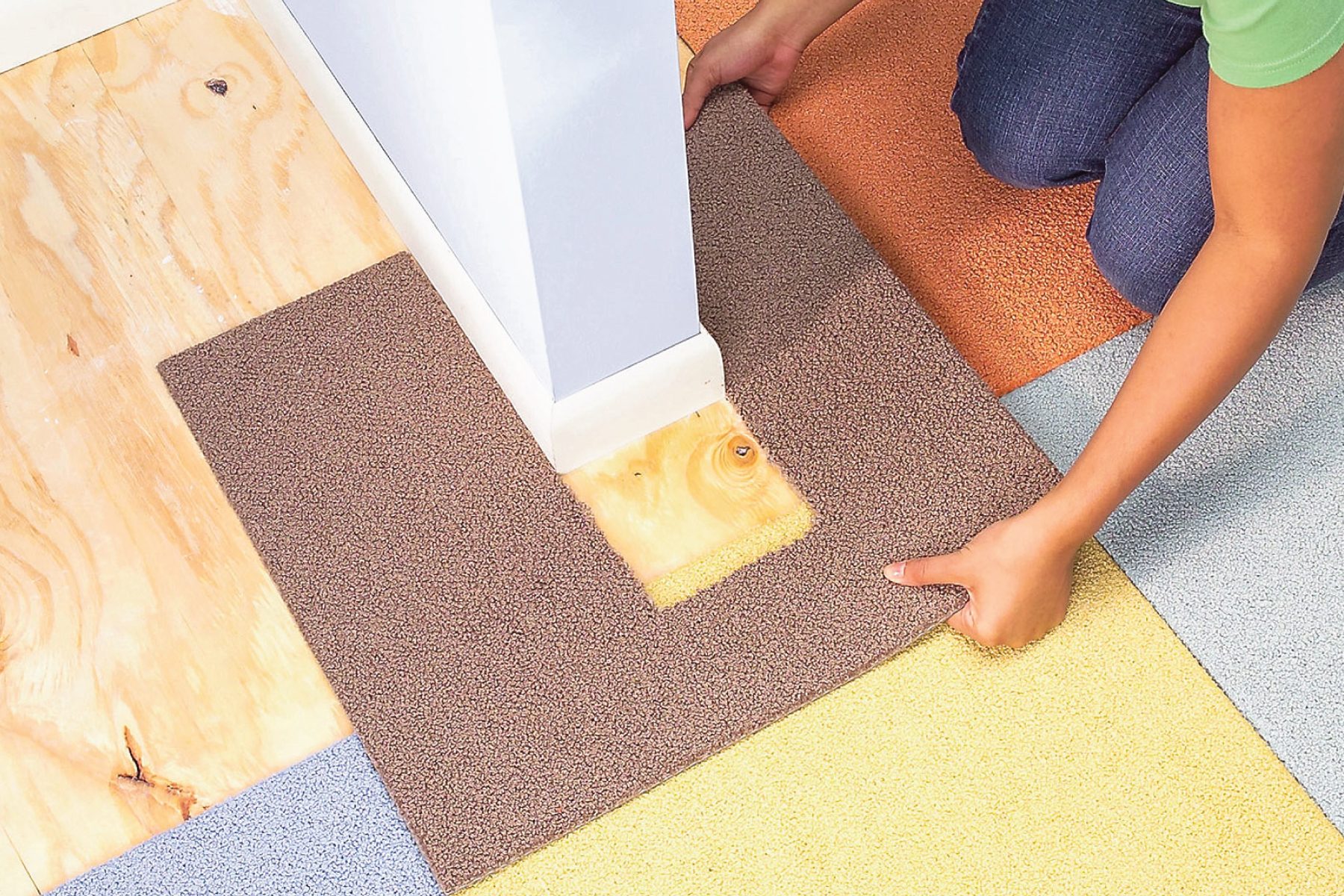
Use templates for tough cuts
To fit the carpet around odd-shaped obstacles, such as doorjambs with angular trim, first make a paper template. You’ll need to make several measurements, transfer them to paper, then cut out the opening. It’ll probably take several tries before you get a good fit. Once the template fits, trace the outline onto the back of a carpet square and cut it.
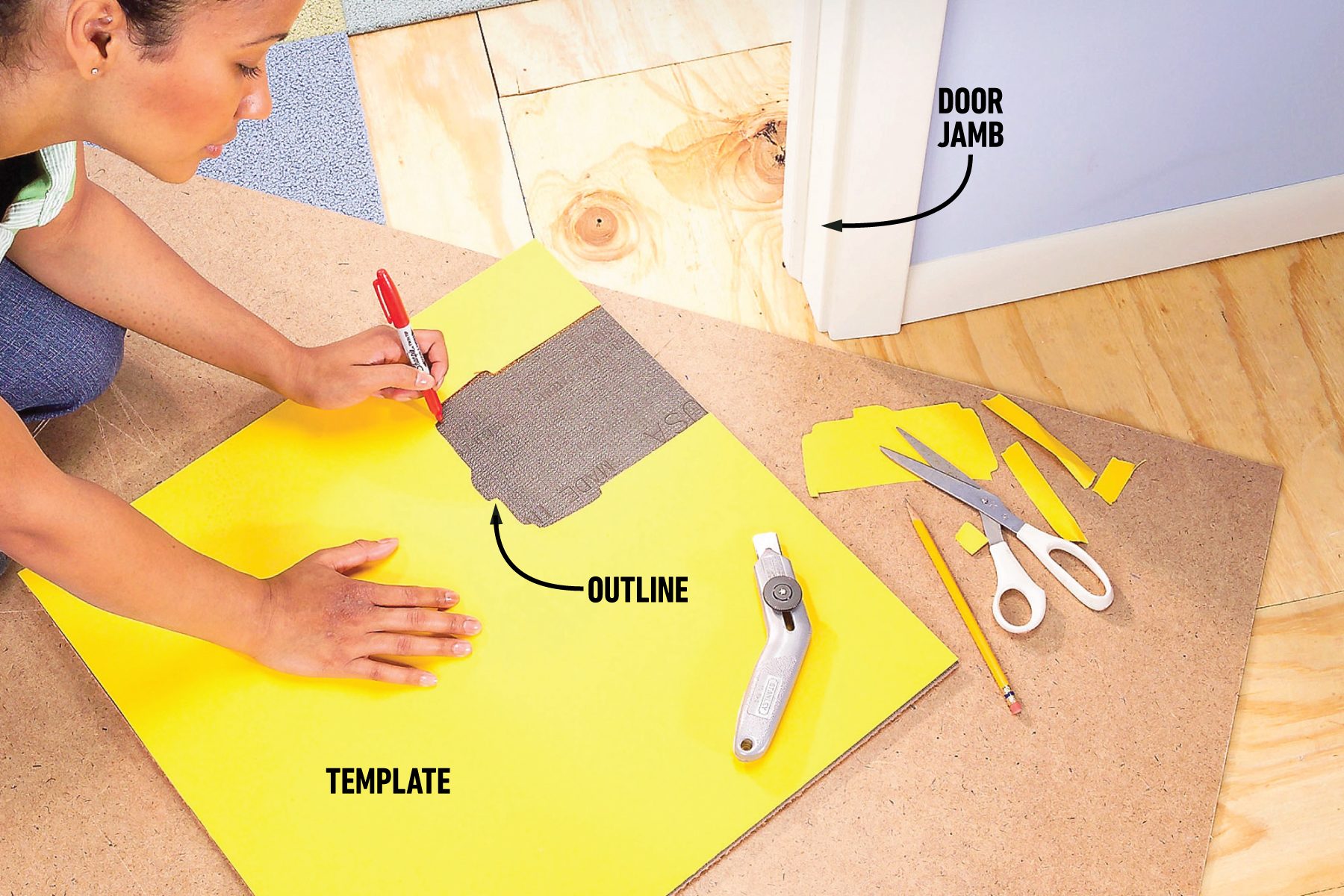
Fillers hide mistakes
Don’t worry if the cut isn’t perfect and you end up with a gap—carpet squares are very forgiving! Just cut a small sliver of carpet from a scrap piece and tuck it snugly into the gap. Wedge the pieces into place, then smooth them with your hand.
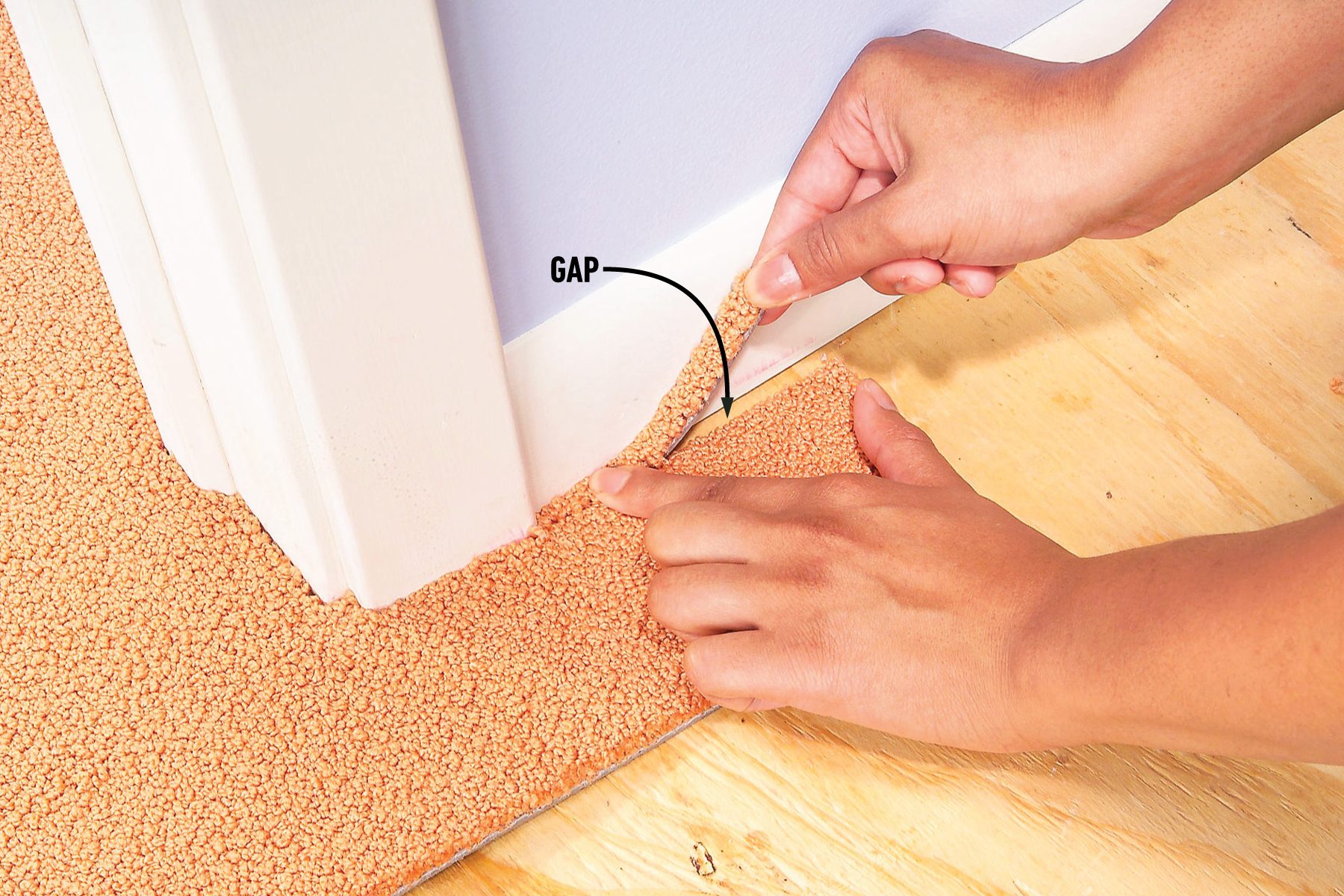
No transition strips needed
Since the carpet won’t unravel, threshold strips aren’t required. Instead, you can simply butt against the flooring in the next room or the existing threshold.
After all of the squares are installed, vacuum the floor. Inevitably, something will eventually spill on the floor, but these squares are easy to clean. If the spill doesn’t wipe up, remove the carpet square and rinse it with water in the sink. Let it dry and replace it in the floor. For squares with permanent stains, just replace the old square with a new one.
